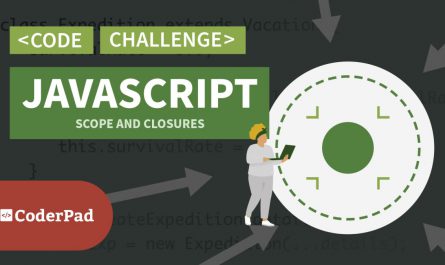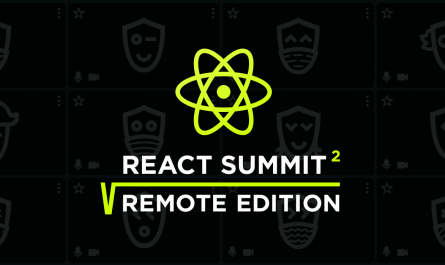
Description
Machine learning is an extremely hot area in Artificial Intelligence and Data Science. There is no doubt that Neural Networks are the most well-regarded and widely used machine learning techniques.
A lot of Data Scientists use Neural Networks without understanding their internal structure. However, understanding the internal structure and mechanism of such machine learning techniques will allow them to solve problems more efficiently. This also allows them to tune, tweak, and even design new Neural Networks for different projects.
This course is the easiest way to understand how Neural Networks work in detail. It also puts you ahead of a lot of data scientists. You will potentially have a higher chance of joining a small pool of well-paid data scientists.
Why learn Neural Networks as a Data Scientist?
Machine learning is getting popular in all industries every single month with the main purpose of improving revenue and decreasing costs. Neural Networks are extremely practical machine learning techniques in different projects. You can use them to automate and optimize the process of solving challenging tasks.
What does a data scientist need to learn about Neural Networks?
The first thing you need to learn is the mathematical models behind them. You cannot believe how easy and intuitive the mathematical models and equations are. This course starts with intuitive examples to take you through the most fundamental mathematical models of all Neural Networks. There is no equation in this course without an in-depth explanation and visual examples. If you hate math, then sit back, relax, and enjoy the videos to learn the math behind Neural Networks with minimum efforts.
It is also important to know what types of problems can be solved with Neural Networks. This course shows different types of problems to solve using Neural Networks including classification, regression, and prediction. There will be several examples to practice how to solve such problems as well.
What does this course cover?
As discussed above, this course starts straight up with an intuitive example to see what a single Neuron is as the most fundamental component of Neural Networks. It also shows you the mathematical and conceptual model of a Neuron. After learning how easy and simple the mathematical models of a single Neuron are, you will see how it performs in action live.
The second part of this course covers terminologies in the field of machine learning, a mathematical model of a special type of neuron called Perceptron, and its inspiration. We will go through the main component of a perceptron as well.
In the third part, we will work with you on the process of training and learning in Neural networks. This includes learning different error/cost functions, optimizing the cost function, gradient descent algorithm, the impact of the learning rate, and challenges in this area.
In the first three parts of this course, you master how a single neuron works (e.g. Perceptron). This prepares you for the fourth part of this course, which is where we will learn how to make a network of these neurons. You will see how powerful even connecting two neurons are. We will learn the impact of multiple neurons and multiple layers on the outputs of a Neural Network. The main model here is a Multi-Layer Perceptron (MLP), which is the most well-regarded Neural Networks in both science and industry. This part of the course also includes Deep Neural Networks (DNN).
In the fifth section of this course, we will learn about the Backpropagation (BP) algorithm to train a multi-layer perceptron. The theory, mathematical model, and numerical example of this algorithm will be discussed in detail.
All the problems used in Sections 1-5 are classification, which is a very important task with a wide range of real-world applications. For instance, you can classify customers based on their interest in a certain product category. However, there are problems that require prediction. Such problems are solved by regression modes. Neural Networks can play the role of a regression method as well. This is exactly what we will be learning in Section 6 of this course. We start with an intuitive example of doing regression using a single neuron. There is a live demo as well to show how a neuron plays the role of a regression model. Other things that you will learn in this section are: linear regression, logistic (non-linear) regression, regression examples and issues, multiple regressions, and an MLP with three layers to solve any type of repression problems.
The last part of this course covers problem-solving using Neural Networks. We will be using Neuroph, which is a Java-based program, to see examples of Neural Networks in the areas and hand-character recognitions and image procession. If you have never used Neuroph before, there is nothing to worry about. There are several videos showing you the steps on how to create and run projects in Neuroph.
By the end of this course, you will have a comprehensive understanding of Neural Networks and able to easily use them in your project. You can analyze, tune, and improve the performance of Neural Networks based on your project too.
Does this course suit you?
This course is an introduction to Neural Networks, so you need absolutely no prior knowledge in Artificial Intelligence, Machine Learning, and AI. However, you need to have a basic understanding of programming especially in Java to easily follow the coding video. If you just want to learn the mathematical model and the problem-solving process using Neural Networks, you can then skip the coding videos.
Who is the instructor?
I am a leading researcher in the field of Machine Learning with expertise in Neural Networks and Optimization. I have more than 150 publications including 80 journal articles, 3 books, and 20 conference papers. These publications have been cited over 13,000 times around the world. As a leading researcher in this field with over 10 years of experience, I have prepared this course to make everything easy for those interested in Machine Learning and Neural Networks. I have been counseling big companies like Facebook and Google in my career too. I am also a star-rising Udemy instructor with more than 5000 students and 1000 5-star reviews, I have designed and developed this course to facilitate the process of learning Neural Networks for those who are interested in this area. You will have my full support throughout your Neural Networks journey in this course.
There is no RISK!
I have some preview videos, so make sure to watch them to see if this course is for you. This course comes with a full 30-day money-back guarantee, which means that if you are not happy after your purchase, you can get a 100% refund no question.
What are you waiting?
Enroll now using the “Add to Cart” button on the right and get started today.
Who this course is for:
- Beginner data scientists interested in using Artificial Neural Networks and deep learning
- Expert data scientists interested in expanding their knowledge of how Neural Networks work internally
- Researchers who want to design and analyze current and new Neural Networks
Requirements
- Have a basic programming skills
- Have a basic understanding of linear algebra particularly partial derivative
Last Updated 4/2020
Download Links
Direct Download
Introduction to Artificial Neural Network and Deep Learning.zip (2.7 GB) | Mirror
Torrent Download
Introduction to Artificial Neural Network and Deep Learning.torrent (77 KB) | Mirror


